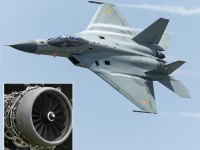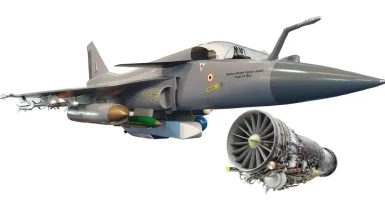- Views: 3K
- Replies: 18
In a strategic move to bolster its partnership with India, British engineering giant Rolls-Royce has expanded its proposal to co-develop a powerful jet engine for India's next-generation stealth fighter.
The company has now included an offer to create a derivative turbofan engine, which could power future Indian-made transport and civilian aircraft, providing a significant boost to the nation's aerospace ambitions.
The primary offer centres on the joint development of a 120-kilonewton (kN) thrust engine for the Advanced Medium Combat Aircraft (AMCA), India's flagship fifth-generation fighter program.
This advanced engine is designed to provide the stealth aircraft with critical capabilities such as supercruise—the ability to fly at supersonic speeds without using fuel-guzzling afterburners. The partnership is a key component of the 'Make in India' initiative, aimed at establishing a robust domestic defence industrial base.
In a significant addition to its proposal, Rolls-Royce has suggested adapting the core of the new fighter engine to develop a family of high-thrust turbofan engines.
By integrating a larger front fan and making other technical modifications, this new variant could generate thrust ranging from 140kN to as high as 280kN. Such a development would address a critical gap in India's aerospace ecosystem, which currently lacks a domestically produced high-thrust engine.
This versatile turbofan engine could be utilized in a variety of future aircraft programs. Potential applications include medium and heavy-lift military transport aircraft for the Indian Air Force and regional passenger jets envisioned by the National Aerospace Laboratories (NAL).
This dual-use potential makes the offer highly attractive, as it would create economies of scale, reduce overall development costs, and provide a common engine platform for both military and civilian needs.
The proposal comes as India deliberates on a crucial partner for the AMCA's engine, with French manufacturer Safran also in contention. A decision is anticipated by the end of the year.
The initial squadrons of the AMCA are planned to be powered by the American GE-F414 engine, while the more advanced Mk-2 version will incorporate the new, more powerful engine co-developed under this partnership.
If the collaboration with Rolls-Royce is finalized, it would involve a substantial transfer of technology and full intellectual property (IP) rights for India. This would empower the DRDO and Indian industry to manufacture, maintain, and even export the engine in the future.
As discussions proceed, officials are expected to focus on finalising the terms related to cost-sharing, production timelines, and the extent of technology transfer, which will be crucial for the future of India's self-reliance in aerospace technology.



